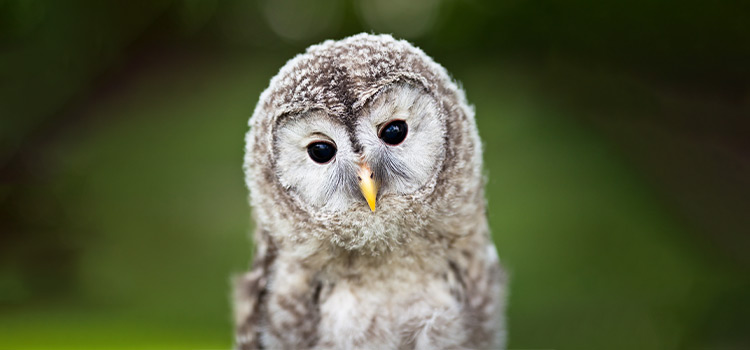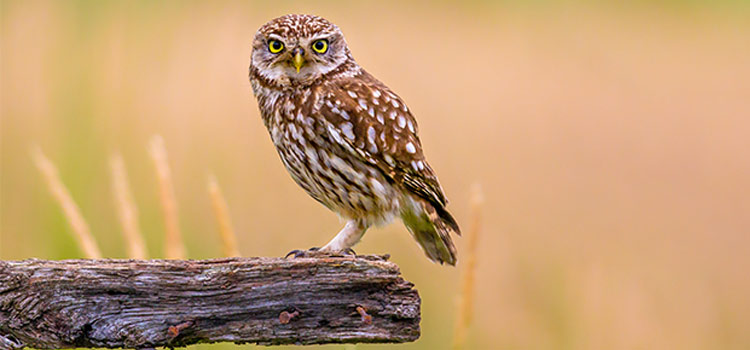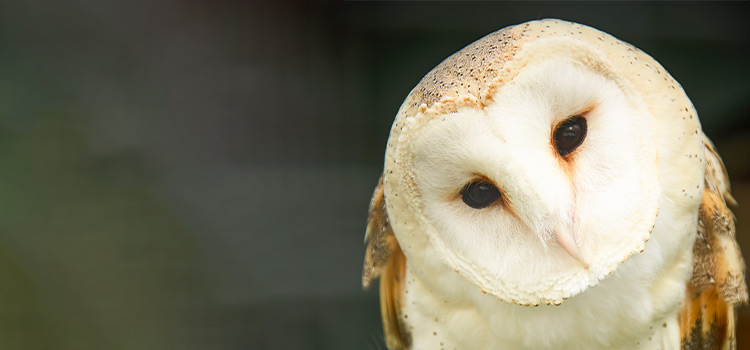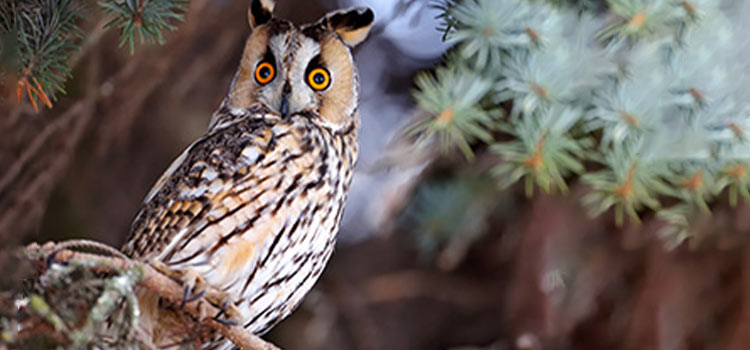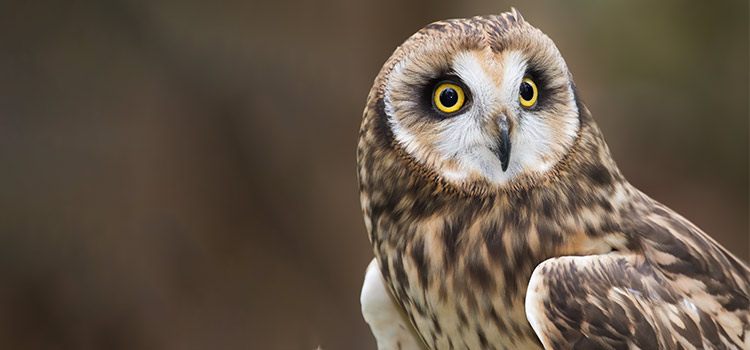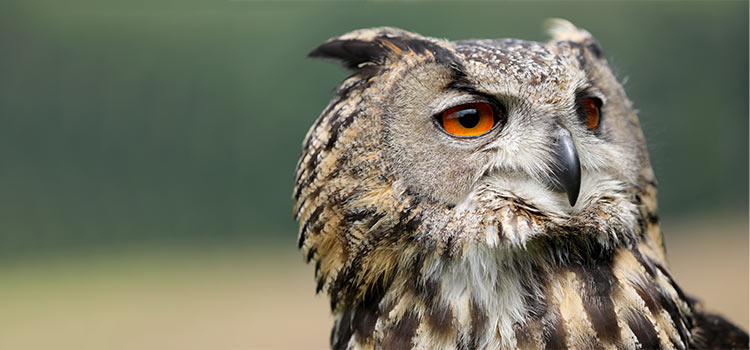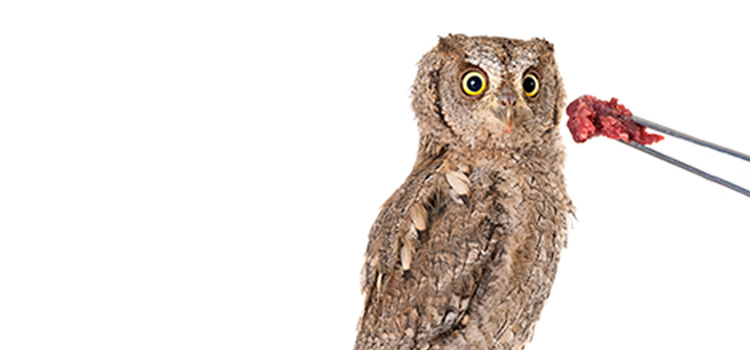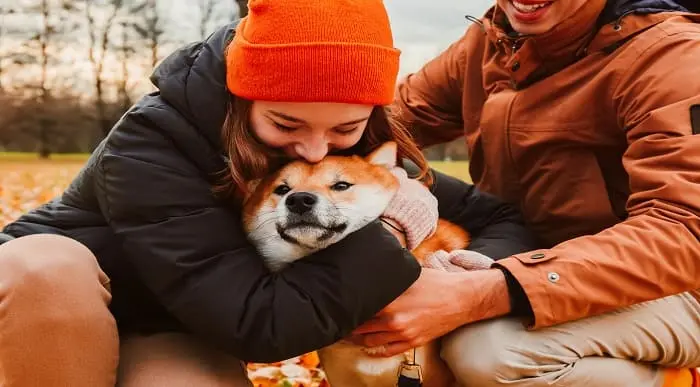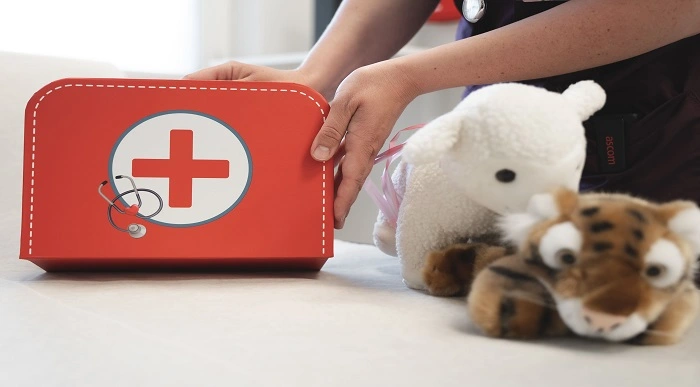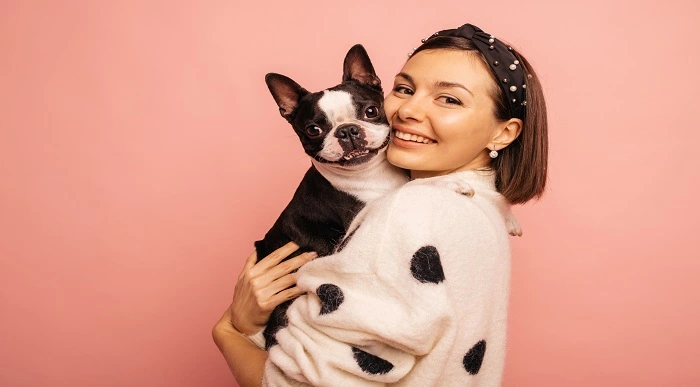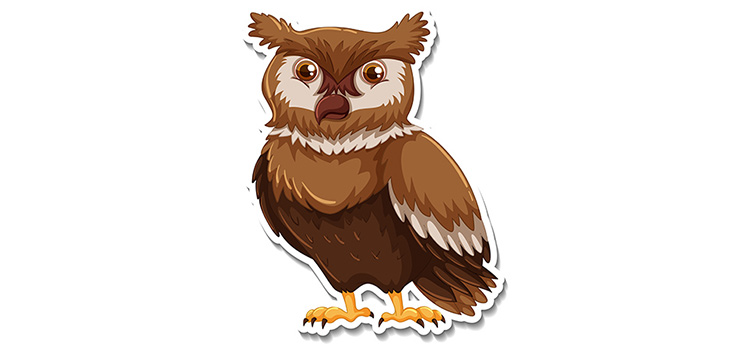Personal Development
How to Take care of a Baby Owl – Video Guide Include
In the process of learning how to take care of baby owl, recognising their bond with humans is also estenstial. They definitely can. But not as you may think. Owls aren’t cats or dogs who form a rather ‘social’ bond with us. This is what we typically expect from pets.
Owls are nocturnal, carnivorous birds of prey located throughout the world. They are said to be opportunistic predators because they adjust their daily food intake to accommodate the most convenient source of sustenance. As a result, these birds are able to eat a wide variety of foods. Because the birds prefer live prey and require a continual source of food for the first few months of their lives, feeding a young owl can be a difficult task. This guide will familiarise you with how to take care of a baby owl.
We’ll still recommend that you don’t undertake the task of taking care of an owl that you found outside of its nest. Don’t get too enthusiastic with catchy YouTube titles like “how to rescue an owl” that may feature a baby owl outside its nest. It doesn’t necessarily mean that its parents abandoned it. Instead, they naturally grow curious and explore around as they get closer to acquiring the ability to fly. The following video shows an owl climbing back into its nest.
However, this depends highly on the species. For example, in the case of barn owls, owlets (A baby owl is called an owlet) on the ground will usually be ignored and will almost certainly die if they cannot climb back up to the nest on their own.
So it’s best if you seek expert advice regarding taking care of an owlet. In this guide, we’ll explain everything that entails taking care of an owl as vividly as possible so you are, at least, informed.
Table of Content
Different Types of Owls
There are more than 225 different species of owls in the world. Check articles like this one from The Spruce if you need to take a quick look at all of them. But here, we’re only going to talk about the ones found in the UK.
There are currently six different types of owls identified as resident species in the UK. These are:
- Tawny or brown owl
- Little owl
- Barn owl
- Long-eared owl
- Short-eared owl
- Eurasian eagle owl
So before you learn how to take care of a baby owl, let’s give you a short introduction to all of them. However, note that you’ll also be given a “conservation status” of the owl which basically tells you if the species is marked as endangered or not. In the UK, there are three different types of conservation statuses.
 Are you want to enroll animals care courses?
Are you want to enroll animals care courses?
Types of Conservation Status
-
The Red List
The Red list represents the greatest conservation priority. It includes species that require immediate attention. Species that are globally threatened also qualify for UK’s Red list criteria as well.
-
The Amber List
The second most critical group is Amber. Birds subjected to historical population decline during 1800–1995, but recovering now make it to the Amber list. For a bird species to make it to the Amber list, its population size has to increase by more than double over the last 25 years. Otherwise, it’s still a critically endangered species, i.e. included in the Red list.
-
The Green list
The least critical group of species are those on the Green list. Basically, all the species that are not on the Red or the Amber list are Green listed.
With that said, here’s a list of owls commonly found in the UK.
Tawny or Brown Owl
Common name: Tawny or brown owl
Scientific name: Strix aluco
Conservation status: Amber
Height: 15-18 inches
Wingspan: 32-41 inches
Develop Your Team to Lead The Industry
Get fully accredited thousands of high quality online courses taught by the world’s leading experts suitable to companies of all sizes.
Little Owl
Common name: Little owl
Scientific name: Athene noctua
Conservation status: Not assessed
Height: 8½ inches
Wingspan: 22 inches
Barn Owl
Common name: Barn owl
Scientific name: Tyto alba
Conservation status: Green
Height: 13½ inches
Wingspan: 35 inches
Long-eared Owl
Common name: Long-eared owl
Scientific name: Asio otus
Conservation status: Green
Height: 15 inches
Wingspan: 39 inches
On-Demand Accredited Courses
Analyze data quickly and easily with powerful PHP library! All datasets included where beginners welcome!
Short-eared Owl
Common name: Short-eared owl
Scientific name: Asio flammeus
Conservation status: Amber
Height: 15 inches
Wingspan: 40 inches
Eurasian Eagle Owl
Common name: Eurasian eagle owl
Scientific name: Bubo bubo
Conservation status: Not assessed
Height: 26 inches
Wingspan: 68 inches
Is It Legal to Own an Owl in the UK?
Owls are wild animals. They aren’t your typical house cats or dogs who can easily be managed as pets. But, owing to the popularity of the Harry Potter series, people can be forgiven for thinking owls are typical house pets.
However, even though the USA strictly banned owning wild animals such as owls, the UK is a bit different story in this respect. You can keep an owl as a pet here. But you have to have a registration for owning an endangered owl species. If you want to keep other wild birds as pets, you must first determine whether you need a license and then apply for one.
For those that are not critically endangered, you have to have a legal defence for owning the bird. To quote the UK government’s website regarding wild birds,
“To prove you own it legally, you should keep a record of when and where the bird was found or taken and by whom or a receipt if you bought it.”
Legally can mean either of the following:
- Taken under licence
- Taken from the wild and held because it is unfit to be released
- After being discovered dead or killed by accident, such as roadkill
Barn owls are the most common species that are kept as pets in the UK. But it is still illegal, under The 1981 Wildlife and Countryside Act, to disturb them in the wild. It is prohibited to disrupt wild barn owls when they are breeding and remove, destroy, or disturb- the nest, eggs, or the young of a nesting barn owl. A single visit to return an owlet to its nest, on the other hand, is unlikely to result in legal action.
However, the law does not mandate the registration of captive barn owls. But, they have to be captive-bred and wear a close ring in order to be sold under the legislation. This continuous metal ring can be slid on a nestling’s leg but not an adult’s. This method is to keep wild adults from being trapped and sold.

Animal Healing Course
- Accredited Courses
- Tutor Support Included
- 3 Installment Plan at checkout
- 14 Days Money Back Guarantee
How to Take Care of a Baby Owl?
Let me preface this section with a warning that keeping an owl as a pet is a MASSIVE investment in terms of money and time, and effort. They have very specific care needs. If you do not know what you are doing, you will almost certainly harm the owl as they are very picky animals.
However, it is understandable if you’re reading this blog knowing what comes next, but you’re still committed. However, stumbling upon an owlet in the wild is also a possibility. In that case, you may be thinking of taking care of it for a few days before returning it to the wild. The best advice here is: don’t. The best option would be to contact trained, licensed individuals who can help you rehabilitate the owlet.
For example, finding a young barn owl somewhere near your home isn’t unusual if you are in the UK. So you may be wondering, what should I do in this case?
- It is very important to note or find out exactly where the owlet was picked up.
- It is not normal for young barn owls to be out of the nest before they can fly. Leaving them well alone is usually not the best thing to do.
- Adult barn owls will typically only feed their nestlings in the nest. Owlets on the ground will usually be ignored and will almost certainly die.
- Owlets that are too young to fly must be placed back in the nest.
- The owlet will not be rejected by its parents because it’s been handled by humans – they have very little sense of smell.
- Hand-rearing the owlet and releasing it later is not the best thing for it.
What to Feed a Baby Barn Owl?
Before Feeding
- Always check to see if the bird has regurgitated the pellet from the previous meal before feeding it. The pellet contains remains of food that cannot be digested, such as shells, feathers, beaks etc. Never feed the bird before it regurgitates, as the pellet may get too large or lodged in its gut. This may even result in the death of your bird.
- Don’t feed owls meat from animals that have been shot. Owls are particularly vulnerable to lead poisoning, and swallowing shrapnel or pellets can result in death.
Preparation
Before feeding the babies, prepare food for them. This chore may be a little nasty for those who are squeamish, but the newborns are unable to devour an entire animal.
- To make it easier for the babies to swallow, tear chunks of meat into smaller pieces.
- Many owls have a negative reaction to food species that look to be dead. If your babies refuse to eat dead mice, chicks, or amphibians, you may need to break them into tiny pieces or expose the innards so the birds may be sure the food source is safe and desirable.
- Live insects are a good alternative too. This is because some finicky birds won’t eat other types of meat that are already dead.
- If the owl’s stomach has a solid mass, don’t try to feed it.
- Don’t worry about feeding it if its stomach feels empty but it has plenty of breast muscle, or if it has produced a pellet or a large watery white and/or black dropping.
- You should feed it if its stomach is empty, it’s a little thin on the chest, and it shows no signs of having eaten recently or produces a small greenish dropping.
Typical Diet of an Owl
- It’s okay to utilise raw poultry meat or raw lean beef in an emergency, but not lamb or pork.
- Offer no more than two days of pure lean meat without roughage, such as fur or feathers, and never give bone without roughage.
- Unless otherwise directed by a veterinarian, never feed cooked meat, canned pet food, or any other non-meat food.
- Dead mice or poultry chicks, purchased frozen from pet stores and completely defrosted before usage, are great options.
- In a 24-hour period, a typical owlet should consume 2-3 chicks that are one day old or 4-5 small mice.
- White mice and yellow chicks are unlikely to be recognised as food by an owlet right away, whereas grey-brown food items are more likely to be consumed.
- Cut up unnaturally coloured foods and place them on a piece of wood in the box near the owlet. Half-matchbox-sized pieces are ideal in this case.
Video Guide
I’d suggest you the following excellent video on YouTube that shows an expert feeding an owlet. He also gives a few instructions on how to ensure the owl is properly restrained before feeding so it doesn’t harm itself or the feeder in this process.
How to Rehydrate and Feed a Starving Owl
Take First-Aid Courses
Courses like “Animal Care and Pet First Aid & CPR Training” are highly valuable if you own a pet. Do not ignore them, as you’re usually the first line of defence if your pet faces an unforeseen emergency. Invest the little time it will take to complete the course, as this will give you further confidence in handling or dealing with pet animals.
Do Owls Bond With Humans?
In the process of learning how to take care of baby owl, recognising their bond with humans is also essential. They definitely can. But not as you may think. Owls aren’t cats or dogs who form a rather ‘social’ bond with us. This is what we typically expect from pets.
However, owls will only ‘imprint’ on you. According to Google, ‘imprint’ is-
“(of a young animal) come to recognize (another animal, person, or thing) as a parent or other object of habitual trust.”
With that said, keep the following things in mind before you plan to own an owl:
- Because of the ‘imprint’ between the ‘parent’. i.e., you and the bird are never truly severed in imprinted owls. The owl may never grow out of certain immature behaviours like calling for food. This might quickly become a source of irritation.
- Humans areas possible mates or competitors by imprinted owls. As a result, they can be pretty violent and aggressive.
- Imprinted males can be particularly bothersome and noisy during the breeding season, which can last for the majority of the year for barn owls in captivity.
FAQs
What can you feed a baby owl?
See the section under the heading “What to Feed a Baby Barn Owl?”
Can you have an owl as a pet?
The short answer is: yes, you can. However, there are some caveats. Give this blog a good read if you haven’t, as we have discussed them in detail inside.
Do baby owls need water?
They certainly do. If you don’t feed them water, they will become dehydrated.
Do owls like being pets?
Owls aren’t social animals like cats or dogs. They don’t like being handled. They can be kept as pets, but like in the case of all other wild animals, it’s not ideal.
Do owls like humans?
They don’t. Though owls don’t hate us either, they aren’t social, so they don’t like being handled.
How do you befriend an owl?
You can’t. An owl will only ‘imprint’ on you. This is explained in the blog in detail.
Do owls regurgitate?
They do. See the section under the heading “Before Feeding” to know about this behaviour in detail.
Where should I keep an owl in my house?
Owls are nocturnal. They are most active at night. As such, it’s best to keep them in a place where they won’t be harmed by sunlight.
How do you train a baby owl?
You can’t train a baby owl. But as it grows, you can teach it some things. However, it will take a lot of resources in terms of time and effort.
Do owls eat cats?
They usually prefer insects, chicks and mice. However, European or Eurasian owls sometimes target larger prey, such as cats. Owls are opportunists. They may target cats if the food supply is scarce.
Can I touch a baby owl?
Touching a baby owl will not ruin the natural smell that may make it unrecognisable to its parents as owls have a poor sense of smell. However, as mentioned earlier, they don’t like being handled or touched.
Can baby owls fly?
In the case of barn owls, by 8-9 weeks of age, owlets will have taken their first short flights, and by 10 weeks of age, the majority of them will be capable flyers.
Conclusion
As you can see, it’s not easy to explain how to take care of a baby owl without going into the details, as some of the care is species-dependent. However, this guide has covered most of the common ones across species and the ones relevant to barn owls. This is because barn owls are usually the choice when people think of owning owls. Also, do remember to check out the YouTube videos linked in this guide as they will be equally valuable to you.
What to Read Next:
- How to Become an Accountant? A to Z Guide to Become an Accountant
- How to Become an Audiologist
- How to Become a Detective in the UK
- How to Become a Youth Worker
- How to Become a Speech Therapist
- How to Become a Solicitor – Step by Step Guide
- How to Become a Personal Assistant



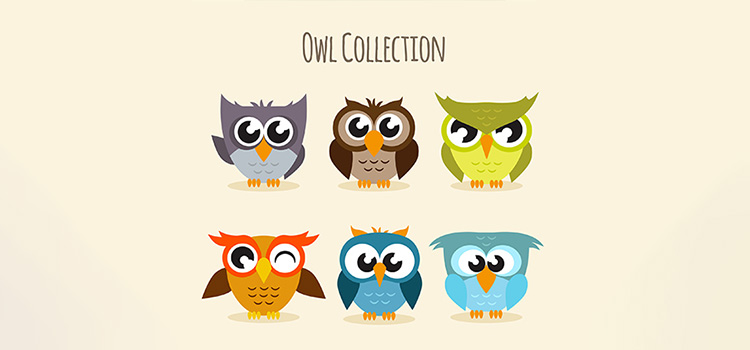
 Are you want to enroll animals care courses?
Are you want to enroll animals care courses? 